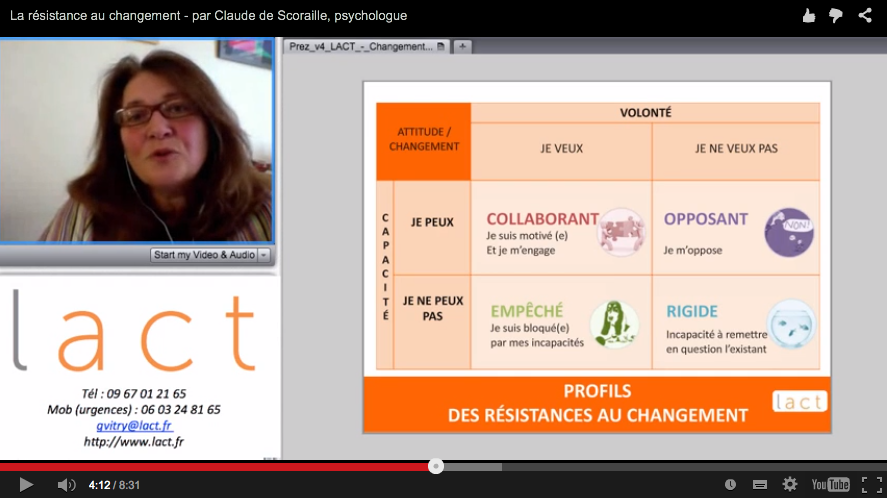 Faced with change, we observe two types of reaction:
Faced with change, we observe two types of reaction:
- I want or I don't want (will)
- I can or I can't (ability)
If we cross these four aspects, we establish a typology of resisters.
1° The collaborator:
He wants change, he is motivated, he has the capacity and he is committed to it. This is obviously a rare profile.
2° The opponent:
He doesn't want to, even if he can. He says no because it's no. This profile will be developed further.
3° The impediment:
He wants change but he is blocked by incapacities that will have to be identified.
They can be technical, relating to communication (he doesn't know how to put it), or simply raise anxiety (emotional domain).
4° The rigid:
The rigid is incapable of questioning the existing. He claims that it should not take place because it is useless, will not improve the organization, has certainties. The rigid can very quickly go into crisis.
In companies, the most frequently encountered cases are opponents and people who are prevented from doing so.
How to settle the case of an opponent?
The opponent, as we have seen, refuses to be involved in an objective to be achieved: “no because it's no! ".
A possible stratagem, as the Chinese say, is to “bring the enemy up to the attic and then remove the ladder”.
Insofar as the opponent is predictable, we can reveal to him the reaction he will have before he expresses it and therefore opposes.Another technique is to use the potential of people who always see “the glass half empty” but who in fact are sometimes proactive.
In any case, it is absolutely recommended to avoid trying to convince him at all costs because, for the circumstances, he is emotional, he is resistant to any rational argument.




